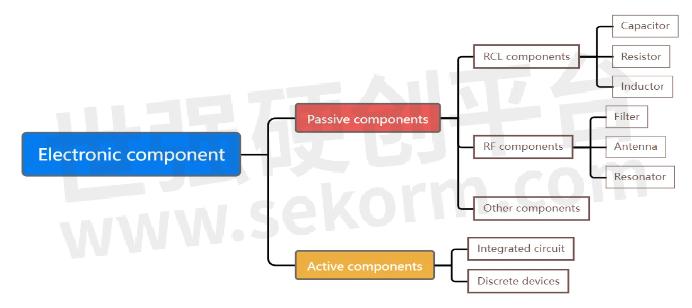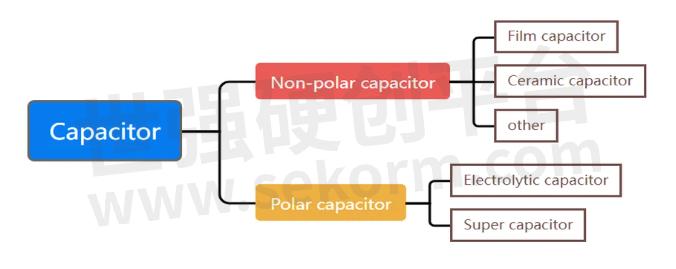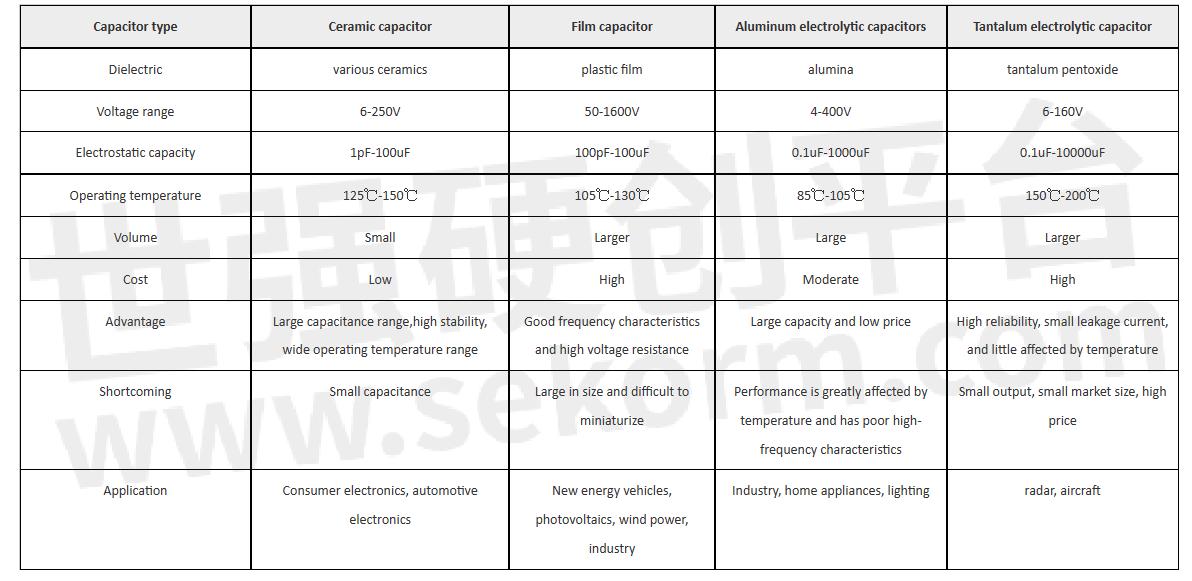Passive Components Usher In New Growth Opportunities In The Era Of Electrification

Benefit from new energy vehicles, photovoltaic, wind power, UPS, industrial motors, and other new energy industry's rapid growth, new energy industry-related passive components growth and development period, new energy passive components market is expected to grow from $ 7.4 billion in 2021 to $ 11.7 billion in 2027, with a compound annual growth rate of 7.9%.
1.1 Passive Components Play An Important Role In Electrification
Electronic components are the main components of electronic circuits and are the most rapidly developing and widely used technological products of the twentieth century. Electronic components are usually divided into two categories: active components and passive components. Active components, also known as active components, are mainly characterized by their own consumption of electrical energy, and the need for an external power supply in order to work properly, and are generally used for signal amplification, conversion, and so on. Passive components, also known as passive components, the main feature is that they do not need an external power supply to work, generally used for signal transmission.
Active components include integrated circuits, discrete devices, and so on. In terms of motorization, active components have the functions of electrical control, amplification of current, etc. Common components such as transistors, MOSFETs, IGBTs, amplifiers, and logic gates.
Passive components include two categories, RCL components and RF components. RCL components include Capacitors, inductors, and resistors, which are essential basic electronic components for electronic circuits, accounting for about 90% of the total output value of passive components. Among them, capacitors play the role of filtering and decoupling in circuits, inductors are used for current stabilization in circuits, and resistors are widely used for current limiting components.

Fig.1
With the global dual-carbon policy force, photovoltaic, wind power, new energy vehicles, railroads, industrial motors, UPS, and other new energy areas of electrification changes in depth, the power supply products demand in related industries to bring new growth in the passive components market. In the field of photovoltaic, and wind power, the inverter is the core component of the power station, the efficiency and life of the inverter are closely related to the passive components, photovoltaic power converter capacitance, inductance, resistance cost of 4%, 4%, 4%, respectively, wind power converter capacitance, inductance, resistance cost of 6%, 5%, 2%, respectively. In the field of new energy vehicles, electric drive systems, and on-board chargers OBC requires a large number of passive components to achieve AC/DC conversion, boost, inverter, and other power conversion functions, new energy vehicle power converter capacitors, inductors, resistors, respectively, 10% of the cost of 10%, 10%, 2%. In the field of industrial motors, AC/DC and DC/AC converter efficiency is critical, capacitors, inductors, and resistors accounted for 9% of the cost, 6%, and 8%. New energy electrification changes to the passive components industry to bring new huge market opportunities.
1.2 Capacitors: Demand For Voltage-Resistant Components Is Increasing, film capacitors Become The Biggest Winners
In the field of new energy, film capacitors have the tendency to replace aluminum electrolytic capacitors.
A capacitor is an energy storage element. The capacitor consists of two conductive plates, which are separated by a dielectric insulating material. The capacitor is one of the three passive components, the biggest feature is the AC and DC resistance, the main function is to store electrical energy, in the power supply circuit to play the function of voltage reduction, filtering, tuning, bypass, and coupling, often used in conjunction with other passive components such as inductors and resistors. The energy storage function is to store electrical energy in the form of an electric field, the smoothing function makes the voltage change become smooth, the coupling function can block DC current only let AC current through, and the decoupling function can play a role in bypassing the high-frequency noise components.
Capacitors are mainly divided into ceramic capacitors, film capacitors, aluminum electrolytic capacitors, and tantalum electrolytic capacitors. Capacitors can be categorized according to different parameters such as polarity, dielectric, shape, function, etc. According to polarity, capacitors can be divided into two categories: polar and non-polar capacitors. Polar capacitors have positive and negative leads and must be connected to positive and negative voltages respectively; non-polar capacitors have neither positive nor negative polarity and can be connected in any direction within the circuit. The medium can be divided into ceramic capacitors, film capacitors, aluminum electrolytic capacitors, tantalum electrolytic capacitors, and the market share of each type of capacitor in 2019 is 52%, 8%, 33%, and 7%, respectively.
Capacitor application scenarios are abundant, and film capacitors have a tendency to replace aluminum electrolytic capacitors in the new energy industry. Ceramic capacitors have a large capacitance range, wide operating temperature range, small dielectric loss, and obvious miniaturization advantages, especially suitable for consumer electronics, occupying the largest share of the capacitor market. Aluminum electrolytic capacitors have large capacities and low prices and are mainly used in industrial, home appliance, and lighting fields. Tantalum electrolytic capacitors have high reliability, low leakage current, and low-temperature influence, and are mainly used in high-end military fields. Film capacitors' performance between ceramic capacitors and electrolytic capacitors, with good frequency characteristics, high voltage, and high reliability, is especially suitable for new energy vehicles, photovoltaic, wind power, industrial control, and other new energy fields. Supercapacitor performance between traditional capacitors and lithium batteries, in the field of new energy applications is promising.

Fig.2
The capacitor development trend presents miniaturization, solidification, ultra-thin, and high-temperature resistance direction. Downstream electronic products gradually towards miniaturization, prompting the upstream ceramic capacitors towards miniaturization. Working environment temperature is too high or too low, may lead to the traditional liquid aluminum electrolytic capacitor electrolyte boiling or solidification, which will affect its performance, solid aluminum electrolytic capacitors have a much higher conductivity than the traditional electrolyte, so they overcome the shortcomings of the traditional aluminum electrolytic capacitor temperature and frequency characteristics of the poor, is the direction of the development of the future aluminum electrolytic capacitors. With the improvement of the performance of military electronic equipment, the development trend of tantalum capacitors will develop in the direction of miniaturization, large capacity, and high reliability. New energy vehicles, photovoltaic, wind power, and other industries have higher and higher performance requirements for film capacitors, which are gradually developing in the direction of ultra-thin and high-temperature resistance.
Table.1

- +1 Like
- Add to Favorites
Recommend
- What are Flying Capacitors?
- Capacitors Support Radar MMIC Amplifiers via Bypassing
- Capacitors for External Defibrillators
- How Gold Capacitors Work?
- Nippon Chemi-Con GOB, MXB and HSF Sereis Aluminum Electrolytic Capacitors with an Upper Category Temperature of 150℃
- Supercapacitor Manufacturer SRT Explain How Solid Capacitors Work
- Material Choices: An Important Criterion in Selecting High-Frequency Capacitors
- Supercapacitor Manufacturers SRT Take You Through the Main Parameters of Capacitors
This document is provided by Sekorm Platform for VIP exclusive service. The copyright is owned by Sekorm. Without authorization, any medias, websites or individual are not allowed to reprint. When authorizing the reprint, the link of www.sekorm.com must be indicated.





























































































































































































































































































































































































































































































































































































































































































































































































































































































